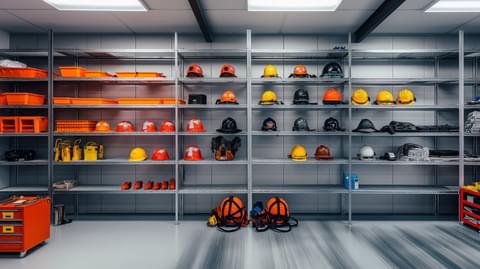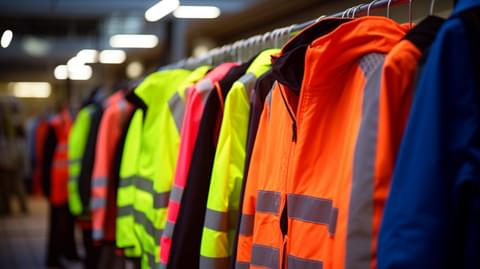
Proper storage of Personal Protective Equipment (PPE) helps prevent it from getting damaged. By ensuring PPE is stored securely, you can maintain its condition and effectiveness, reducing the need for frequent replacements. Correct storage also keeps the equipment away from any potential hazards that could cause damage and compromise its effectiveness. Below are 10 common PPE storage mistakes you can avoid.
UV rays can degrade materials, reducing their effectiveness and lifespan.
Moisture can cause mould growth and material degradation, while high temperatures can warp or weaken materials.
Lack of airflow can lead to moisture build-up, promoting mould and mildew growth.
This can cause permanent creases, deformation, and damage to the protective properties of the materials.
Residual chemicals, dirt, and contaminants can degrade materials and reduce the effectiveness of the PPE.

Cross-contamination and physical damage can occur, especially if sharp or heavy items are stored with more delicate ones.
Exposure to contaminants can degrade materials and reduce the protective qualities of the PPE.
Potential damage or degradation may go unnoticed, leading to the use of ineffective PPE.
Lack of proper storage containers can lead to moisture build-up, contamination, and physical damage.
These dates indicate the maximum lifespan of the equipment under ideal conditions, not necessarily the replacement date.
In the UK, it is a legal requirement for all employers to provide necessary storage for Personal Protective Equipment (PPE). According to the Workplace (Health, Safety and Welfare) Regulations 1992, employers are responsible for providing appropriate, secure, and adequate facilities for employees to store their PPE. These facilities can range from simple lockers in changing rooms to advanced options like special boxes that protect against dirt, temperature, and moisture.
Employers must also ensure that workers’ personal clothing is kept separate from wet or contaminated work gear and garments. Under the Personal Protective Equipment at Work Regulations 1992, as amended in 2022, UK employers are legally required to provide suitable PPE and ensure it is properly stored, maintained, and kept separate from personal clothing. This duty now extends to both employees and limb (b) workers, reinforcing the importance of clean, secure, and accessible storage facilities.
While employers are responsible for the maintenance, storage, and replacement of any PPE they provide, workers have a duty to use the PPE properly, following the training and instructions given by their employer. This collaborative effort helps ensure a safe and compliant workplace.

Bruce works at the forefront of global requirements and is a leading authority on arc flash PPE. Bruce is also highly knowledgeable about the requirements of the Energy and Utilities industry.